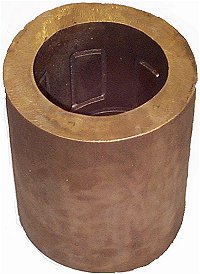
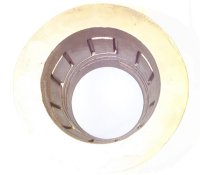
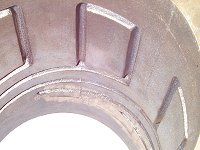
The HydroBushing™
Hydrostatic Surface Self-Compensated Bushing
Within the manufacturing industry higher speeds and accuracy means cheaper and more reliable products, that can reach the market place faster. This is essential to remain competitive in today’s fast paced world. Manufacturing processes often require rotary or linear motion, to provide this accurately and reliably bearings are used. In general there are four kind of bearings: rolling element, aerostatic, magnetic and hydrostatic bearings. Rolling element bearings are most widely used, but as speed, accuracy and dynamic requirements increase they become less attractive to the designer. A main shortcoming of an aerostatic bearing is it’s limited load capacity and dynamic stiffness. This may lead to catastrophic situations under impact loads. Magnetic bearings are not only load limited but also extremely expensive. When design requirements increase hydrostatic bearings, even in their conventional form, offer high load capacity, both dynamic and static stiffness, damping and accuracy. However, in their traditional form the manufacturing cost is high including sometimes time consuming fine tuning. Shear loses at higher speeds can also become unacceptable.



Fig 1. 6" ID HydroBushing. Sand cast before finish machining.
The HydroBushingÔ surface self-compensated bushing offers great advantages over traditional hydrostatic bearings. It utilizes a unique patented design for metering the fluid flow (compensation), collecting the fluid and channeling the fluid to the opposite side of the bearing to a pocket region. As the name suggest this design does not use capillaries or diaphragms to achieve load compensation. Everything needed is included in surface geometry of the bushings inner surface.This design is not prone to clogging problems but is self-cleaning. The design also allows both rotary and linear motion.
Because the system is self-compensating it is always optimized for any radial clearance that exists. Stiffness and flow are functions of the bearing gap and supply pressure, while load capacity is a function of supply pressure. These linear dependencies instead of the higher order dependencies of the conventional hydrostatic bearing make the HydroBushingÔ insensitive to manufacturing errors. The internal features can be manufactured by different casting methods, injection molding or even machining in some cases. The casting is the most economical way for small quantities, but for larger number of bushings the use of engineering plastics together with injection molding is well worth looking into. In general the manufacturing costs of the HydroBushingsÔ are relatively low. This makes the HydroBushingÔ readily available to replace regular hydrostatic bearings in existing designs with enhanced performance.
a) b)
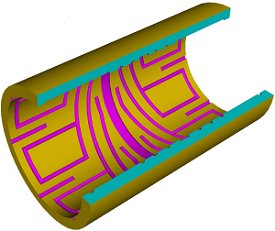
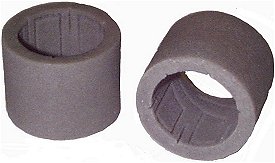
Fig 2. a) Cut open view of 1.25" ID HydroBushing solid model for spindle application. b) 3-d printed wax models of the 1.25" ID bushing for investment casting.
Unlike other hydrostatic bearings that use large deep pockets and thin land widths to minimize shear power, the HydroBushingÔ uses a picture frame pocket that leaves intact a central land region which creates a very large damping land to maximize dynamic stiffness and crash resistance. In addition, the central damping land and the special surrounding groove shapes minimize turbulent shear power losses, so for high speeds water becomes the ideal bearing fluid and temperature rises and shear power losses can be readily controlled.
The HydroBushingÔ offers following properties:
Because of its unique surface geometry, the HydroBushing™ has NONE of the undesirable properties commonly associated with most hydrostatic bearing designs:
Because of the self-compensating design, the HydroSpindle™ can use water (or a water based coolant) instead of oil to achieve significant advantages:
These characteristics make the HydroBushingÔ suitable to great number of applications ranging from submarine propeller shafts to heavy industrial presses, boring mills, forming equipment, super finishing machines and to high accuracy, high speed spindles.
This project is funded by the Defense Logistics Agency.
| Dr. Kevin L. Wasson
Aesop, Inc. P.O. Box 2126 Concord, NH 03302 (603) 774-5904 (phone) (603) 774-5909 (fax) klwasson@aol.com |
Prof. Alexander H. Slocum Dept. of Mechanical Engineering Massachusetts Institute of Technology 77 Massachusetts Avenue, Room 3-445 Cambridge, MA, 02139 (617) 258-6427 (fax) slocum@mit.edu |
Sami
Kotilainen |